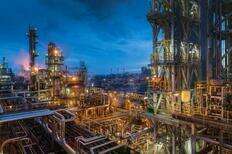- INEOS invested £30 million to convert its Hull site to hydrogen.
- The conversion cuts carbon emissions by 75%, equivalent to removing 160,000 petrol cars.
- INEOS Acetyls produces acetic acid, acetic anhydride, and ethyl acetate.
- The hydrogen is a co-product from existing processes, enhancing resource efficiency.

Investment and Emission Reduction
INEOS has invested £30 million to transition its Hull manufacturing site from natural gas to hydrogen, achieving a 75% reduction in carbon emissions. This change is equivalent to removing approximately 160,000 petrol cars from the road, marking a significant step towards the company's net zero goals ahead of the 2050 target.
Decarbonisation Strategy
This investment is part of a broader strategy to decarbonise INEOS operations across the UK and Europe. The Hull site, operated by INEOS Acetyls, is the only industrial-scale producer of acetic acid, acetic anhydride, and ethyl acetate in Europe. These chemicals are vital for various applications, including pharmaceuticals and water purification.
Resource Efficiency
The hydrogen used at the Hull site is produced as a co-product from existing manufacturing processes, demonstrating an efficient use of available resources. This model of utilizing hydrogen as a by-product is seen as replicable across the industry, potentially setting a standard for other chemical manufacturing sites.
Ongoing Projects
The Hull upgrade is one of several decarbonisation projects underway at INEOS sites, including Grangemouth and Köln. These efforts are part of the company's commitment to meet and exceed climate targets, emphasizing immediate action rather than long-term plans.

